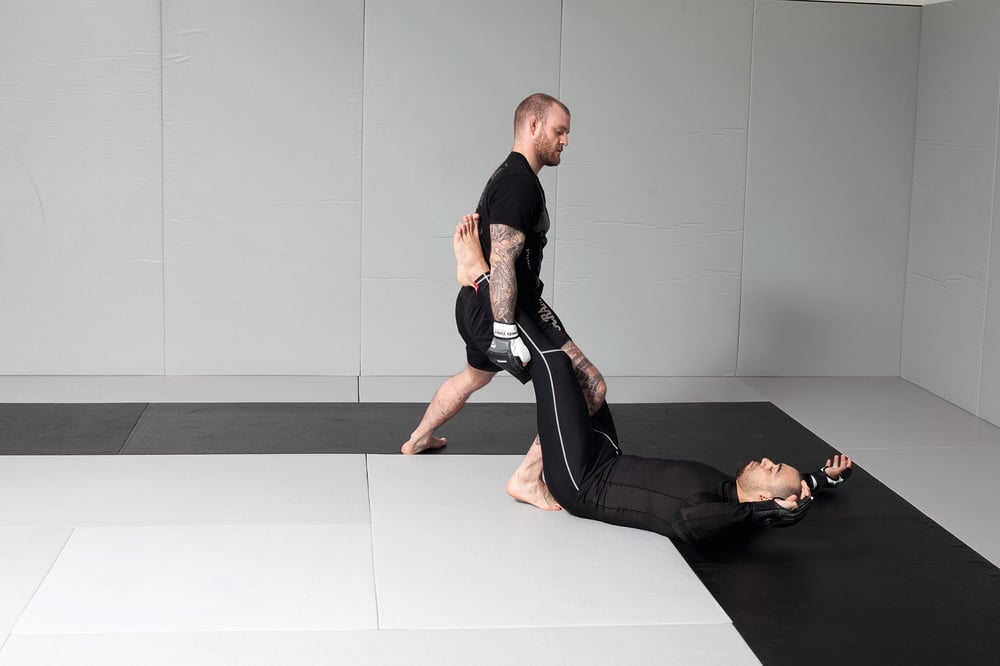
Issue 073
March 2011
Slipping and rolling under punches, also referred to as "bobbing and weaving," carries inherent risks under MMA rules. You have to be aware of your opponent’s knees and kicks, and maintaining your own base in order to defend takedowns. Head movement in MMA should be minimized and used more sparingly than in boxing. But when applied correctly it can open up opportunities to counter punches and score your takedowns.
Rolling under punches
Rolling under, or ‘bobbing’, is potentially disastrous when dealing with knees. So in MMA it’s imperative to close to your opponent and be accurate with your level changing. Maintain good head position so not to give space and time for a knee strike to arrive. 'Rampage' Jackson is one of the best exponents of bobbing in MMA. Take a look at how he set up his spectacular knockout of Wanderlei Silva.
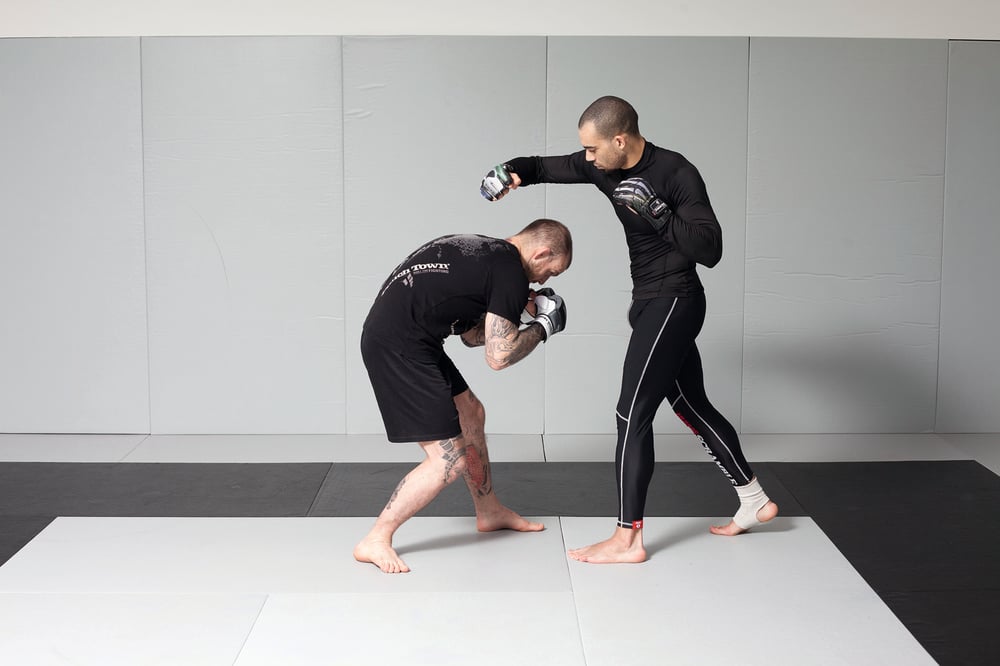
1 Incorrect – Pete (left) is looking at the mat and is vulnerable to a knee strike. Even if the knee doesn’t catch him, he’ll have to look up again to reacquire his target which will cost valuable time.

2 Correct – as Obi throws the right hook, Pete keeps his eyes on him, moving slightly away as the left hook comes. He drops his level and rolls underneath the punch, arriving on the far side ready to counter.

3 Pete is in perfect position to throw a left hook.

4 Pete twists and brings his hand over Obi’s extended arm to land on Obi’s jaw.
Slipping punches
When slipping or ‘weaving’ punches, the goal is to make your opponent miss by millimeters, not by miles. Too much head movement will leave you vulnerable for the next punch, off balance and too far away from your punching stance to throw a counter. Take a look at Rough House fighter Andre Winner for great examples of head movement and counter punching.
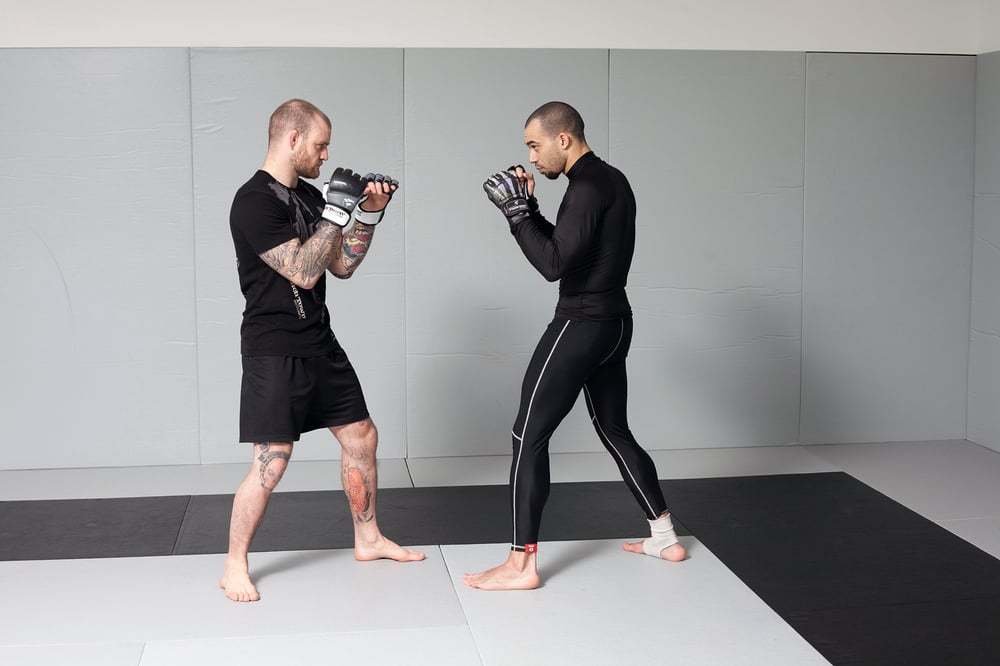
1 Pete and Obi square off in orthodox stance, both with their hands up and their chins tucked down.
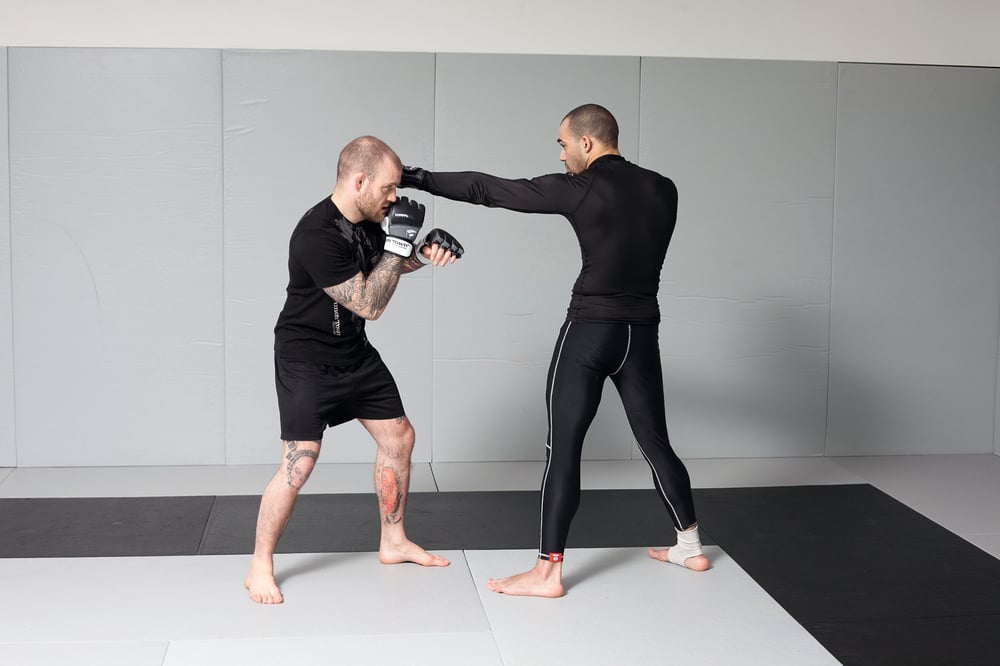
2 As Obi throws his jab, Pete moves his head just outside of the punch, parrying the shot away from his head with the open palm of his right hand.

3 As Obi throws his right cross Pete slips to the outside of the punch, loading his stance on his lead leg.
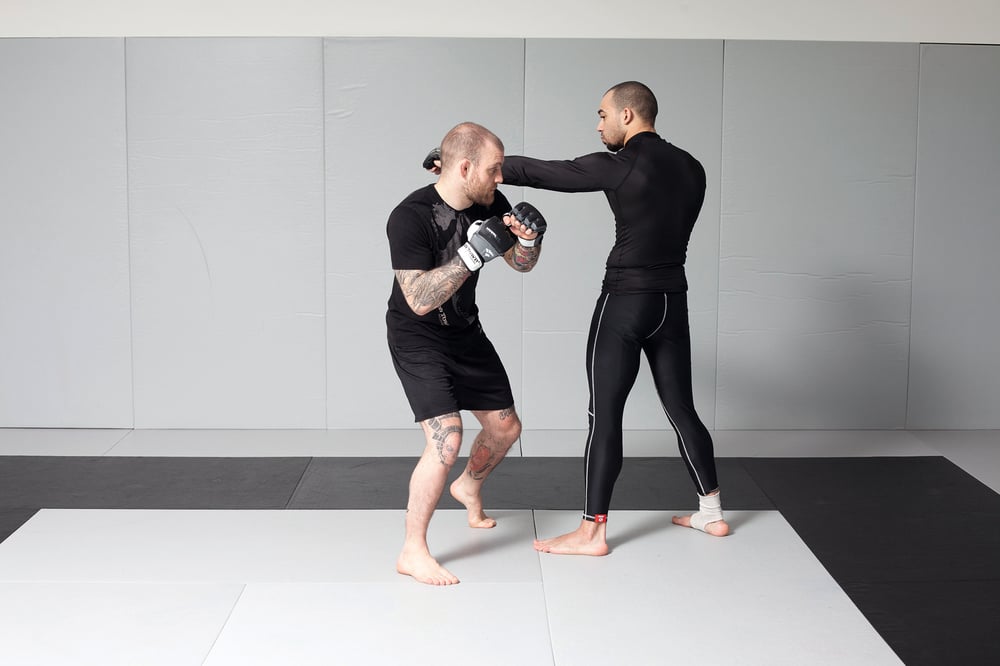
4 Obi comes back with another straight left. Pete slips again to the outside, loading his stance onto his back leg.

5 Pete throws the right over Obi’s arm straight to Obi’s jaw.
Slipping the jab to head-on-the-outside single leg
A jab often opens up the lead side of the body, clearing the first two lines of defense (hand and elbow). With correct timing a shooter can take advantage of this opening to capture the lead leg. Welterweight champion Georges St Pierre is a master of this basic but highly effective takedown set-up.
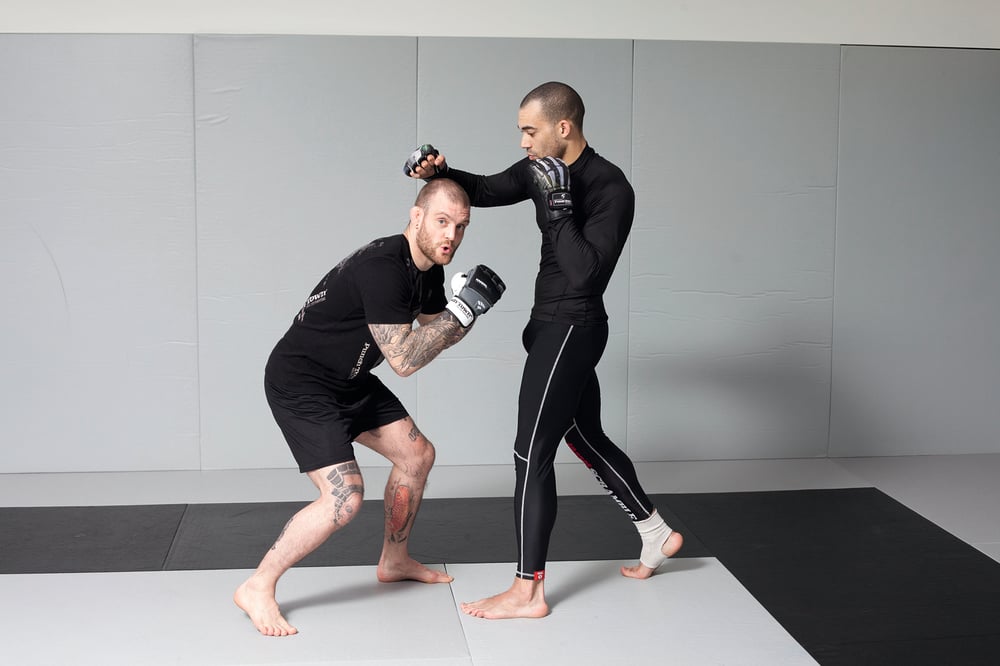
1 Pete slips the jab, loading his stance on his back leg ready to drive off on the shot. Pete steps his lead leg in between Obi’s legs at the midpoint of Obi’s stance.
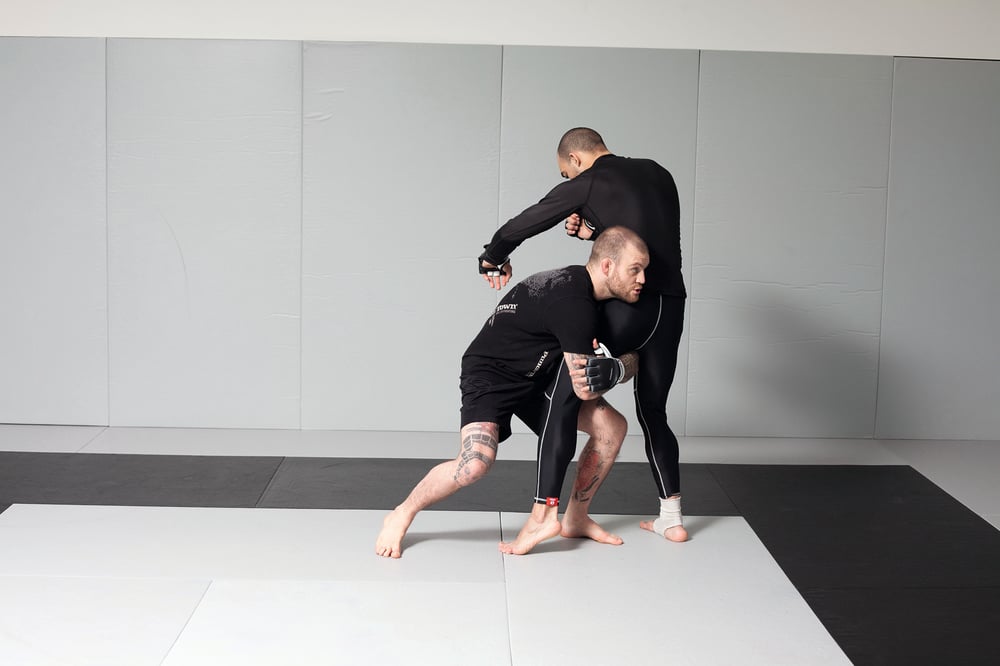
2 Pete maintains good head position as he captures Obi’s lead leg.

3 Pete switches to a double leg finish, stepping behind Obi’s back leg as he drives forward with his head and shoulder, flaring Obi’s back leg to finish.
Double leg takedown from the far side, utilizing head movement
Everybody‘s familiar with the phrase ‘The hand is faster than the eye.' If you watch your opponent’s hands his punch will land before you see it coming. Zone in behind his hands, around the chest so you can observe both shoulders. The shoulders will signal which punch is about to come and help you to evade incoming strikes.

1 Pete slips Obi’s jab, keeping his eyes on Obi’s shoulders to anticipate his next attack.
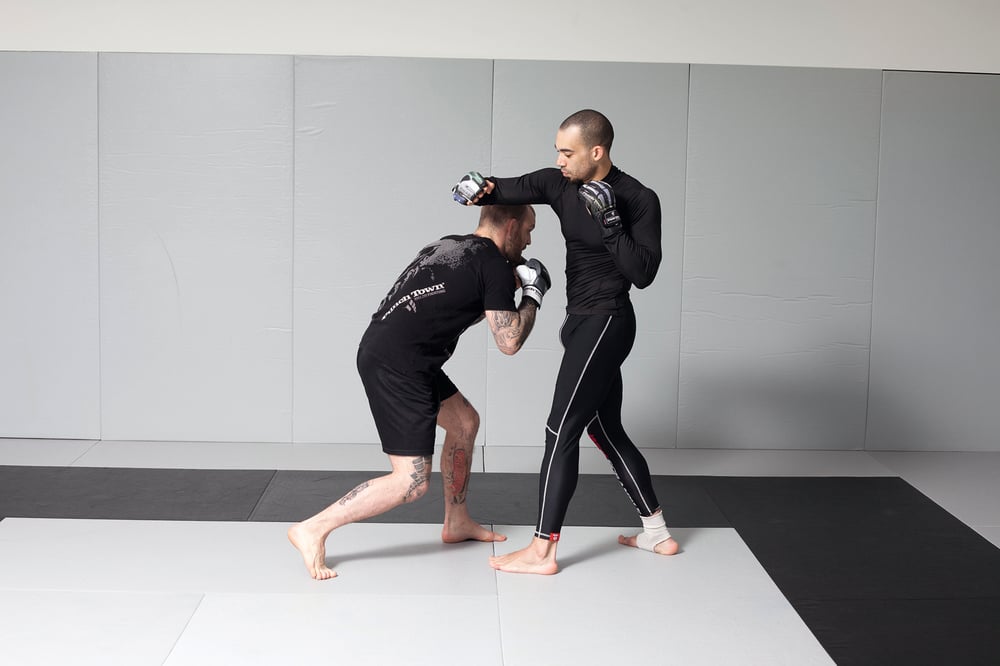
2 As Obi sends a right hook to where Pete moved his head, Pete rolls under to the far side.
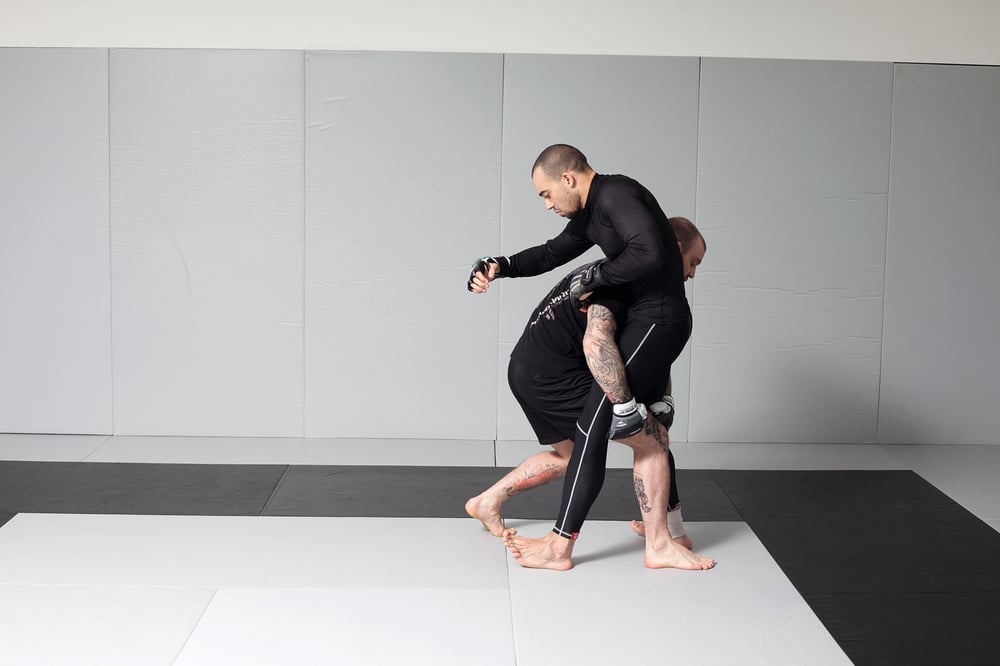
3 Pete steps his trail leg forward to become his lead leg, through the center of Obi’s stance. Pete’s shoulder slams into Obi’s sternum, knocking him back.
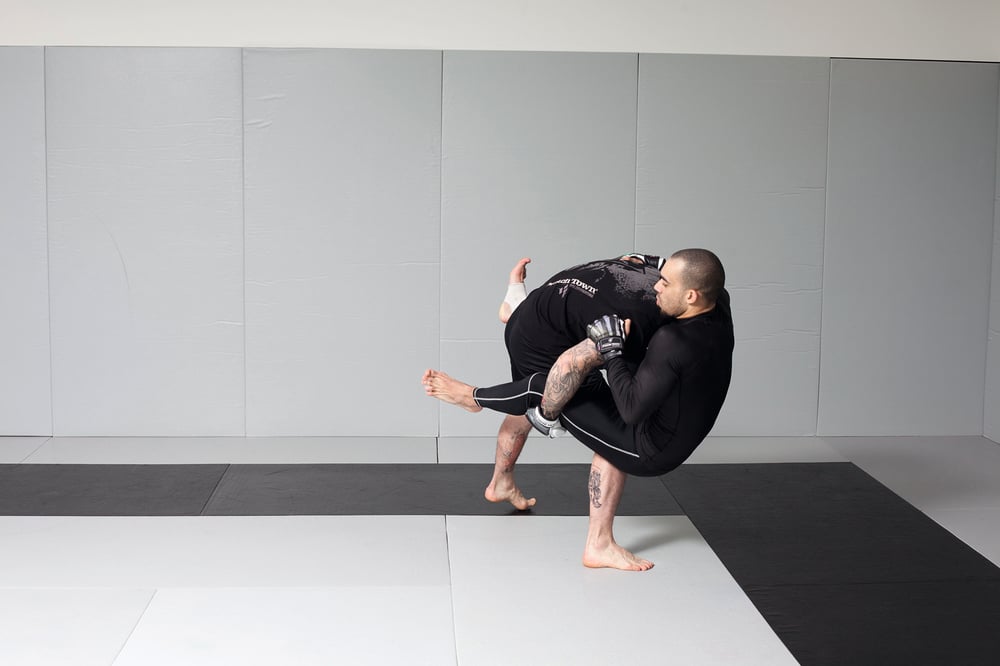
4 Pete whips back with his hands behind Obi’s knees as he drives forward with his shoulder. Pete is careful to recover his head position and control Obi’s hooks so as not to receive an upkick.
